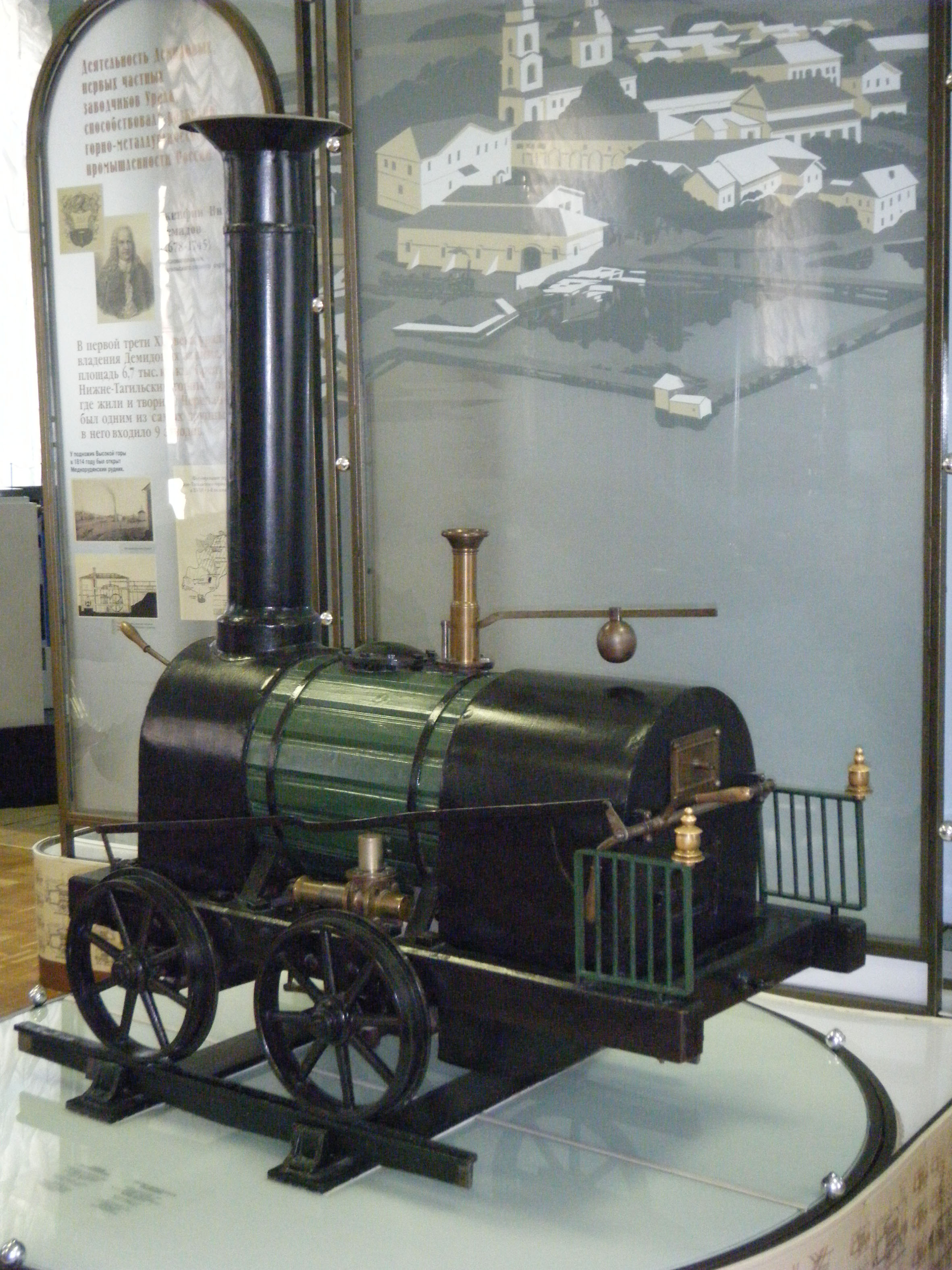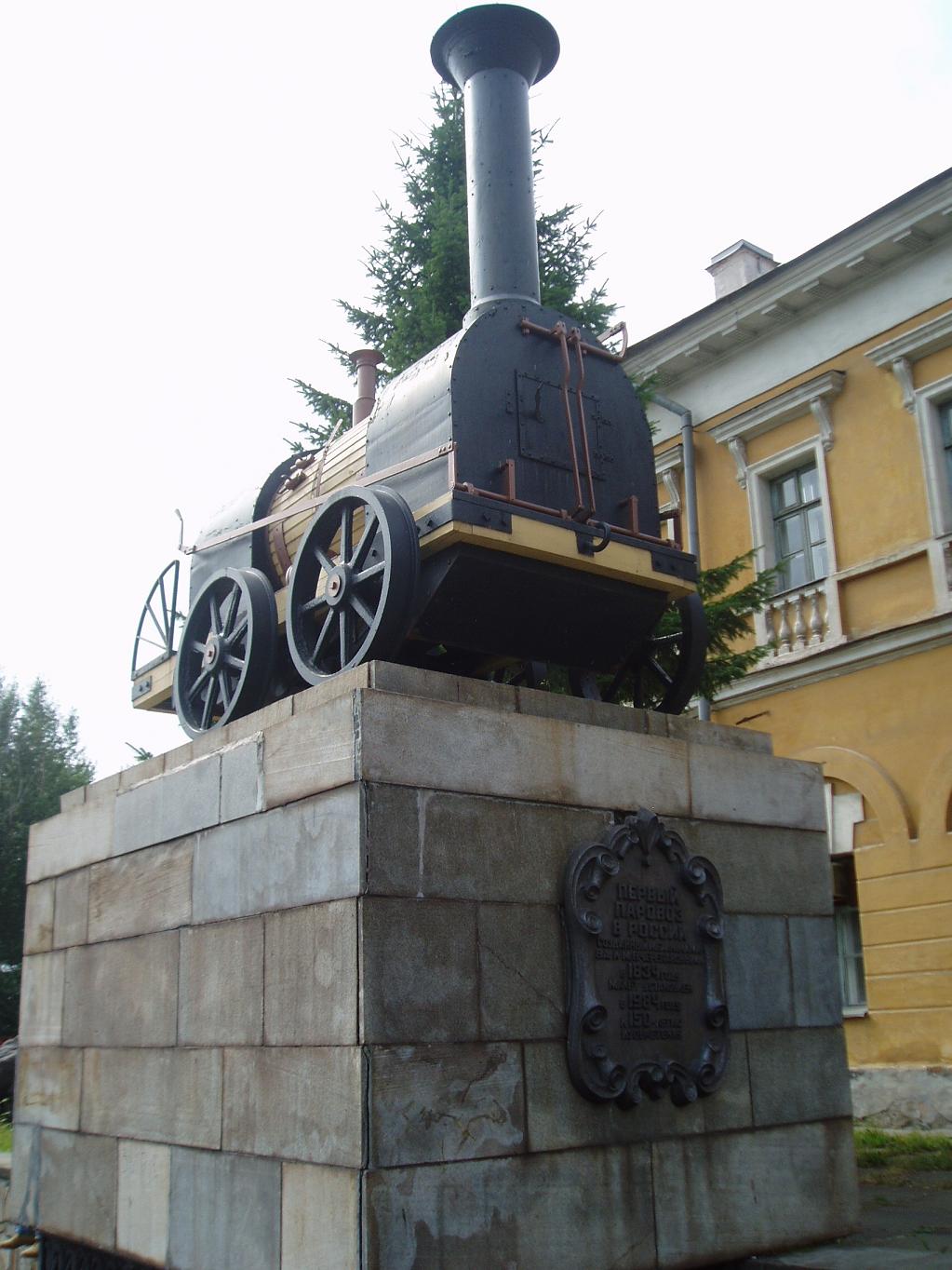Cherepanovs on:
[Wikipedia]
[Google]
[Amazon]

 Yefim Alekseyevich Cherepanov (russian: Ефи́м Алексе́евич Черепа́нов; 1774 – 1842), and his son Miron Yefimovich Cherepanov (russian: Миро́н Ефи́мович Черепа́нов; 1803 – 1849) were
Yefim Alekseyevich Cherepanov (russian: Ефи́м Алексе́евич Черепа́нов; 1774 – 1842), and his son Miron Yefimovich Cherepanov (russian: Миро́н Ефи́мович Черепа́нов; 1803 – 1849) were


 Yefim Alekseyevich Cherepanov (russian: Ефи́м Алексе́евич Черепа́нов; 1774 – 1842), and his son Miron Yefimovich Cherepanov (russian: Миро́н Ефи́мович Черепа́нов; 1803 – 1849) were
Yefim Alekseyevich Cherepanov (russian: Ефи́м Алексе́евич Черепа́нов; 1774 – 1842), and his son Miron Yefimovich Cherepanov (russian: Миро́н Ефи́мович Черепа́нов; 1803 – 1849) were Russia
Russia (, , ), or the Russian Federation, is a transcontinental country spanning Eastern Europe and Northern Asia. It is the largest country in the world, with its internationally recognised territory covering , and encompassing one-eig ...
n inventors and industrial engineers
Industrial may refer to:
Industry
* Industrial archaeology, the study of the history of the industry
* Industrial engineering, engineering dealing with the optimization of complex industrial processes or systems
* Industrial city, a city dominate ...
. They were serfs of the Demidov
The House of Demidov (russian: Деми́довы) also Demidoff, was a prominent Russian noble family during the 18th and 19th centuries. Originating in the city of Tula in the 17th century, the Demidovs found success through metal products, ...
s – a famous family of factory owners. In 1810s, Yefim built a progressive machine-building plant, equipped with a full range of innovative metal-cutting lathes (such as screw-cutters, gear-cutting serrating machines and others). From 1822 until his death, Yefim was chief mechanic for all the factories in the town of Nizhny Tagil
Nizhny Tagil ( rus, Нижний Тагил, p=ˈnʲiʐnʲɪj tɐˈgʲil) is a city in Sverdlovsk Oblast, Russia, located east of the boundary between Asia and Europe. Population:
History
The prehistory of Nizhny Tagil dates back to the mid- ...
. Miron was his apprentice and in 1819 was appointed his deputy. Miron became chief mechanic after his father's death.
Innovations
Industrial machinery
The Cherepanovs significantly improved the machinery that had been used in blast-furnace andgold
Gold is a chemical element with the symbol Au (from la, aurum) and atomic number 79. This makes it one of the higher atomic number elements that occur naturally. It is a bright, slightly orange-yellow, dense, soft, malleable, and ductile me ...
-mining industries, iron
Iron () is a chemical element with Symbol (chemistry), symbol Fe (from la, Wikt:ferrum, ferrum) and atomic number 26. It is a metal that belongs to the first transition series and group 8 element, group 8 of the periodic table. It is, Abundanc ...
and copper
Copper is a chemical element with the symbol Cu (from la, cuprum) and atomic number 29. It is a soft, malleable, and ductile metal with very high thermal and electrical conductivity. A freshly exposed surface of pure copper has a pinkis ...
works, sawmill
A sawmill (saw mill, saw-mill) or lumber mill is a facility where logs are cut into lumber. Modern sawmills use a motorized saw to cut logs lengthwise to make long pieces, and crosswise to length depending on standard or custom sizes (dimensi ...
s, and flourmill
A gristmill (also: grist mill, corn mill, flour mill, feed mill or feedmill) grinds cereal grain into flour and middlings. The term can refer to either the grinding mechanism or the building that holds it. Grist is grain that has been separat ...
s.
Steam engines
The most interesting aspect of the Cherepanovs' work were steam engines which they tried to introduce into industrial production. From 1820, the Cherepanovs built about 20 steam engines that ranged from 2 to 60 hp.Railroad
In 1833-34 they built the first Russian steam locomotive. They also built a cast-ironrailroad
Rail transport (also known as train transport) is a means of transport that transfers passengers and goods on wheeled vehicles running on rails, which are incorporated in tracks. In contrast to road transport, where the vehicles run on a pre ...
from one of their factories to a copper mine
Mine, mines, miners or mining may refer to:
Extraction or digging
* Miner, a person engaged in mining or digging
*Mining, extraction of mineral resources from the ground through a mine
Grammar
*Mine, a first-person English possessive pronoun
...
. Track gauge
In rail transport, track gauge (in American English, alternatively track gage) is the distance between the two rails of a railway track. All vehicles on a rail network must have wheelsets that are compatible with the track gauge. Since many ...
was 5 ft 6 in (1670 mm). In 1835, they built a second locomotive that they sent to Saint Petersburg
Saint Petersburg ( rus, links=no, Санкт-Петербург, a=Ru-Sankt Peterburg Leningrad Petrograd Piter.ogg, r=Sankt-Peterburg, p=ˈsankt pʲɪtʲɪrˈburk), formerly known as Petrograd (1914–1924) and later Leningrad (1924–1991), i ...
. Despite the successful performance and operation of their locomotives, the Cherepanovs' invention found no support outside the factory and, subsequently, horse traction replaced their steam locomotives.

See also
*Russian Railway Museum
The Russian Railway Museum is situated next to Baltiysky railway station in Saint Petersburg. The museum was established in 1978, its current site and exhibition opened to public on 1 November 2017. The museum utilizes the nineteenth century lo ...
, Saint Petersburg
Saint Petersburg ( rus, links=no, Санкт-Петербург, a=Ru-Sankt Peterburg Leningrad Petrograd Piter.ogg, r=Sankt-Peterburg, p=ˈsankt pʲɪtʲɪrˈburk), formerly known as Petrograd (1914–1924) and later Leningrad (1924–1991), i ...
* Stephenson's Rocket
* Planet (locomotive)
''Planet'' was an early steam locomotive built in 1830 by Robert Stephenson and Company for the Liverpool and Manchester Railway.
History
The ninth locomotive built for the L&MR, it was Stephenson's next major design change after the ''Rocke ...
* Bury Bar Frame locomotive
The Bury Bar Frame locomotive was an early type of steam locomotive, developed at the Liverpool works of Edward Bury and Company, later named Bury, Curtis, and Kennedy in 1842. By the 1830s, the railway locomotive had evolved into three basic ...
References